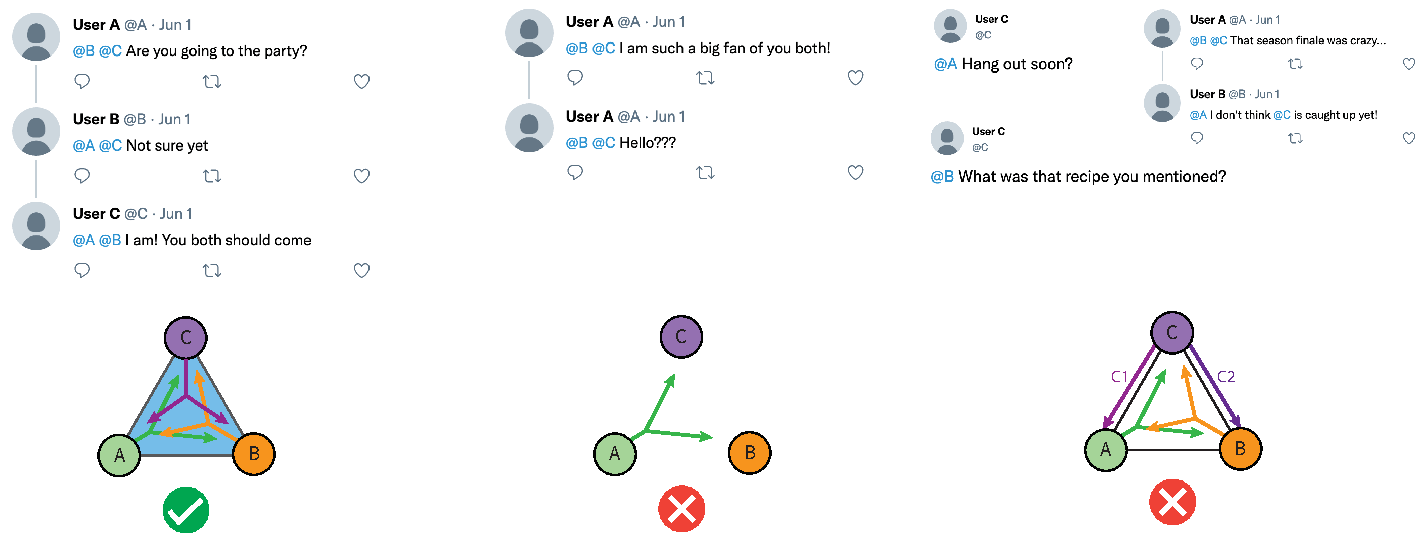Higher-Order Social Interactions

Abstract
Higher-order network models have emerged as powerful extensions of the dyad-centric graph representation for modeling complex social systems. However, the combinatorial flexibility they offer necessitates a principled approach to defining higher-order interaction, such as what constitutes “social” interaction in a group context. Lax definitions can substantially distort the description of a domain’s social characteristics (e.g., homophily, in-group bias), exaggerate the connectivity of the system, and potentially lead to misguided conclusions about its social dynamics (e.g., diffusion potential). We draw upon microsociological insights to rigorously define higher-order interactions among 38 million Twitter users across six Anglophone countries, modeling the communication networks as simplicial 2-complexes. We find structural effects of higher-order interactions at the dyad to the entire network level that are otherwise untraceable in a graph representation. At the dyad level, edges involved in triadic higher-order interactions exchange messages more frequently than comparable edges embedded in triads comprised of isolated one-on-one interactions. Furthermore, the topological features of these edges are highly predictive of tie strength over and above standard social network correlates. At the triad level, three Twitter users engaged in higher-order interactions tend to express more positive and negative emotion in their tweets than those who engage only in dyadic interactions. The relative frequency of positive emotion words is highest when users in the triad do not engage in any exclusive pairwise interactions. Finally, at the level of the entire network, these higher-order interaction triads are interconnected at surprisingly high levels, suggesting highly integrated social organization.
Article link: working paper